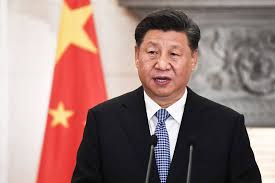In a decisive move to revive its weakening economy amid an intensifying trade war with the United States, China on Wednesday unveiled a package of monetary easing measures—including interest rate cuts, large-scale liquidity injections, and targeted sectoral support.
At a high-level press briefing in Beijing, Governor of the People’s Bank of China (PBOC), Pan Gongsheng, announced that the central bank would slash the key seven-day reverse repurchase rate by 10 basis points to 1.4%, and reduce the reserve requirement ratio (RRR) by 50 basis points—a step expected to inject 1 trillion yuan ($138.6 billion) into the financial system.
The measures mark China’s most aggressive monetary action in 2025 and signal a shift toward more proactive intervention as domestic demand weakens and trade tensions with Washington escalate.
“These steps reflect our determination to stabilize growth and support key pillars of the economy,” Pan said.
The new policy rates take effect Thursday, while the RRR cut will be implemented on May 15.
The PBOC also introduced several sector-specific initiatives, including a 500-billion-yuan relending facility to support consumption and elderly care services.
Mortgage rates under the state-backed housing provident fund will be cut by 25 basis points, lowering loan rates for first-time homebuyers from 2.85% to 2.6%.
In addition, auto financing firms will have their reserve requirements gradually reduced to zero in a bid to revive car sales—a crucial indicator of consumer confidence.
Despite the broad scope of the stimulus, economists remain cautious about its impact.
“The credit channel remains sluggish. Lower rates alone won’t revive borrowing appetite,” said Tianchen Xu, senior economist at the Economist Intelligence Unit. “The deeper issue lies in confidence and structural headwinds.”
Authorities hinted that further support is under consideration. Li Yunze, head of the Financial Regulatory Administration, confirmed that additional relief measures for small and medium-sized enterprises (SMEs) are being finalized, especially those affected by the recent U.S. tariff hikes.
The announcements coincided with confirmation that Vice Premier He Lifeng will travel to Switzerland this week for talks with U.S. Treasury Secretary Scott Bessent.
The meeting—the first formal dialogue since President Donald Trump raised tariffs to 145%—is being closely watched for signs of a possible thaw in relations.
Analysts say the central bank’s timing is strategic, as the yuan has recently stabilized. The Chinese currency rebounded to 7.22 per dollar, recovering from a record low of 7.4287 earlier in May.
“With the RMB stabilizing, the PBOC has more policy space to ease without triggering capital outflows,” said Zhiwei Zhang, chief economist at Pinpoint Asset Management.
However, the absence of fresh fiscal stimulus drew scrutiny. “Policymakers may be holding back budget measures until clearer signs of distress emerge,” Zhang added.
The monetary moves follow mounting pressure on Beijing to act decisively as deflationary pressures deepen and economic growth slows.
In a recent policy-setting meeting, Chinese leaders warned of “worst-case scenarios” and pledged full readiness to respond.
“We expect another 20 basis points in rate cuts and a further 50-basis-point RRR reduction before year-end,” predicted Lynn Song, ING’s Greater China chief economist. “But the timing will hinge on the Fed’s next move.”
Markets reacted calmly to the announcements. China’s 10-year government bond yield held steady at 1.636%, while equity indices edged higher in late trading.
As the world’s second-largest economy navigates one of its most volatile chapters in recent decades, Wednesday’s policy shift underscores Beijing’s growing sense of urgency—and the narrowing window to contain mounting economic risks.


